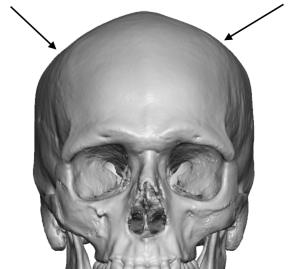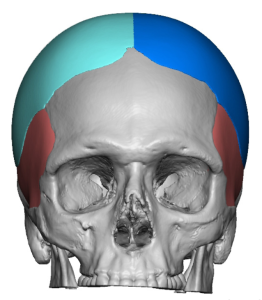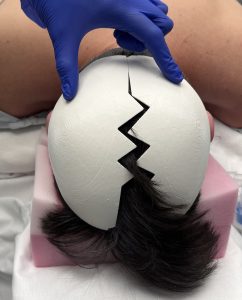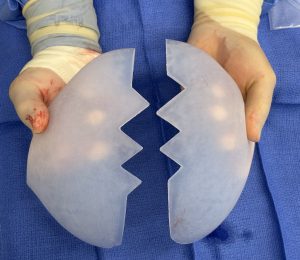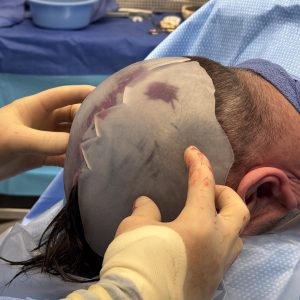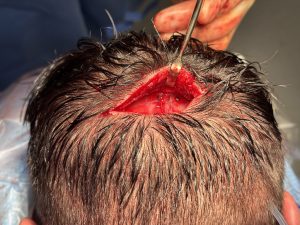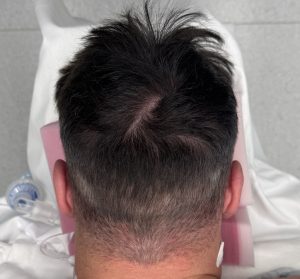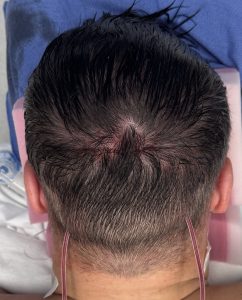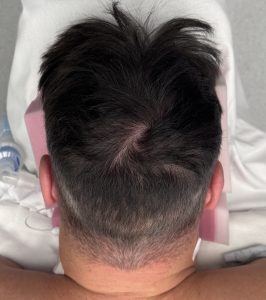Background: There are a variety of types of narrow head shapes which vary based on the extent of bitemporal width reduction and how it affects the shape of the front and back of the head. In more complete manifestations the head is narrow from front to back and either the forehead or the parieto-occipital is also lacks adequate width or roundness. When the narrowness affects the back of the head this creates for the patient a lack of skull projection in the oblique views with a flattening of the temporal lines and a reduced crown and top of the head height.
In these more extended forms of narrow head shapes a horse shoe type of skull augmentation is needed. This can be created by a custom skull implant design using the patient’s 3D CT skull scan. While it is ‘easy’ to design any implant on the computer screen it is often quite a different matter to surgically place it. In placing these extended surface area coverage skull implants there is not the luxury of having full visualization of their placement using a long scalp incision. Rather, because it is an aesthetic operation, small scalp incisions need to be used that can heal in an inconspicuous manner. As a result how can such a large implant fit through them?
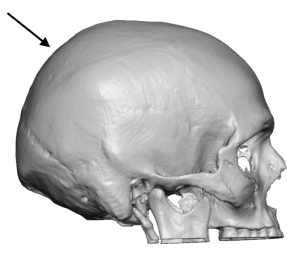
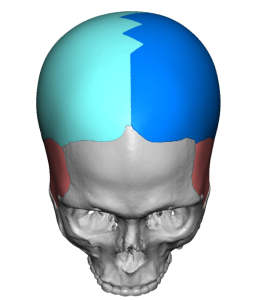
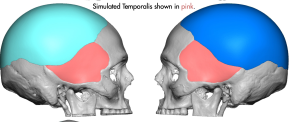
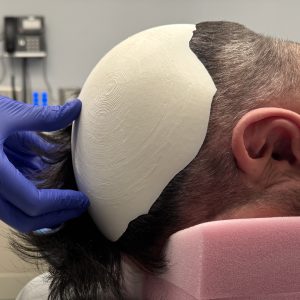
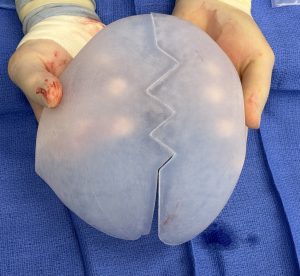
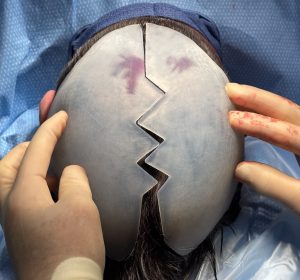
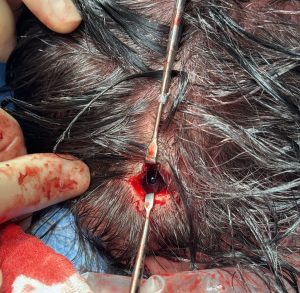
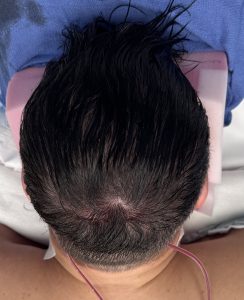
When most think of skull augmentation they think of a rounder more convex implant often used to augment a flat spot on the head. But head widening implants are longer and thinner and cover a much larger surface area. This poses some unique considerations in the tissue pocket dissection and implant placement. Since there are two sides to the head the implant design can be though of as two halfs which can be reunited once inside the pocket to create the full head reshaping effect.
Key Points:
1) The narrow shaped head has a decreased bitemporal width that often extends onto the back of the head.
2) The narrow head can be widened by extended skull implants that wrap around the sides and back of the head for posterior augmentation as well.
3) Such head widening wrap around custom skull implants have to be designed and inserted in pieces to keep the scalp incisions limited.
Dr. Barry Eppley
World-Renowned Plastic Surgeon



